
The Upanishads are late Vedic and post-Vedic Sanskrit texts that "document the transition from the archaic ritualism of the Veda into new religious ideas and institutions" and the emergence of the central religious concepts of Hinduism. They are the most recent addition to the Vedas, the oldest scriptures of Hinduism, and deal with meditation, philosophy, consciousness, and ontological knowledge. Earlier parts of the Vedas dealt with mantras, benedictions, rituals, ceremonies, and sacrifices.

Sannyasa, sometimes spelled Sanyasa or Sanyasi, is life of renunciation and the fourth stage within the Hindu system of four life stages known as Ashramas, with the first three being Brahmacharya, Grihastha (householder) and Vanaprastha. Sannyasa is traditionally conceptualized for men or women in late years of their life, but young brahmacharis have had the choice to skip the householder and retirement stages, renounce worldly and materialistic pursuits and dedicate their lives to spiritual pursuits.
Muktikā refers to the Sanskrit-language anthology of a canon of 108 Upaniṣhads. The date of composition of each is unknown, with the oldest probably from about 800 BCE. The Principal Upanishads were composed in the 1st millennium BCE, most Yoga Upanishads composed probably from the 100 BCE to 300 CE period, and seven of the Sannyasa Upanishads composed before the 3rd century CE.
Uddalaka Aruni, also referred to as Uddalaka or Aruni or Uddalaka Varuni, is a revered Vedic sage of Hinduism. He is mentioned in many Vedic era Sanskrit texts, and his philosophical teachings are among the center piece in the Brihadaranyaka Upanishad and Chandogya Upanishad, two of the oldest Upanishadic scriptures. A famed Vedic teacher, Aruni lived a few centuries before the Buddha, and attracted students from far regions of the Indian subcontinent; some of his students such as Yajnavalkya are also highly revered in the Hindu traditions. Both Aruni and Yajnavalkya are among the most frequently mentioned Upanishadic teachers in Hinduism.

The Avadhuta Upanishad is a medieval era Sanskrit text and is one of the minor Upanishads of Hinduism. The text is attached to the Krishna Yajurveda, and is one of the 20 Sannyasa (renunciation) Upanishads. The text is also titled the Brihadavadhuta Upanishad, Laghuavadhuta Upanishad, and the Avadhutopanishad.

Aruneya Upanishad is a minor Upanishad in the corpus of the 108 Upanishads of Hinduism. It is written in Sanskrit. It is one of the 16 Upanishads attached to the Samaveda. It is classified as a Sannyasa Upanishad.

The Paramahamsa Parivrajaka Upanishad, is a medieval era Sanskrit text and a minor Upanishad of Hinduism. It is one of the 31 Upanishads attached to the Atharvaveda, and classified as one of the 19 Sannyasa Upanishads.

The Paramahansa Upanishad, is one of the 108 Upanishadic Hindu scriptures, written in Sanskrit and is one of the 31 Upanishads attached to the Atharvaveda. It is classified as one of the Sannyasa Upanishads. According to Ramanujacharya, Paramhansa is one of the forms of Lord Vishnu who imparted vedas to Lord Brahma in the form of Divine Swan as per Vishnu-Sahasranama.
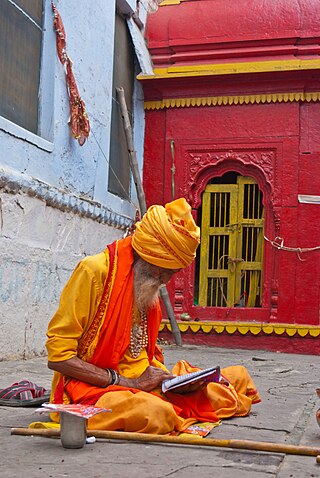
The Bhikshuka Upanishad, also known as Bhikshukopanishad, is one of the minor Upanishads of Hinduism and is written in Sanskrit.
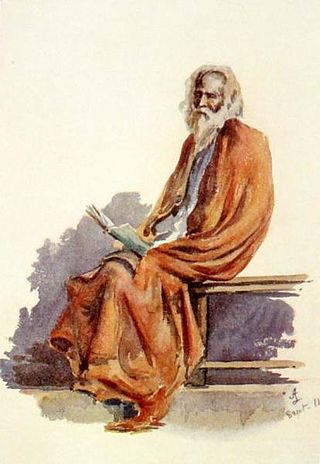
The Jabala Upanishad, also called Jabalopanisad, is a minor Upanishad of Hinduism. The Sanskrit text is one of the 20 Sannyasa Upanishads, and is attached to the Shukla Yajurveda.

The Kundika Upanishad, also known as Kundikopanishad, is an ancient text and a minor Upanishad of Hinduism. It is one of the 19 Sannyasa Upanishads, and is one of the 16 Upanishads attached to the Sama Veda.

The Kathashruti Upanishad is a minor Upanishad of Hinduism. The Sanskrit text is one of the 20 Sannyasa Upanishads, and is attached to the Krishna Yajurveda.
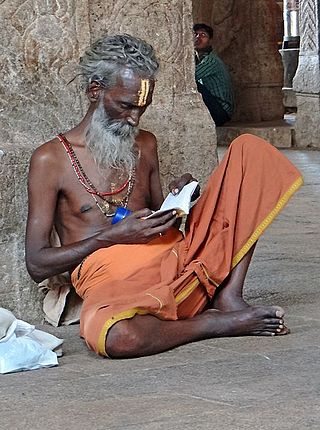
The Naradaparivrajaka Upanishad is a medieval era Sanskrit text and one of the minor Upanishads of Hinduism. The text is attached to the Atharva Veda, and is one of the 20 Sannyasa (renunciation) Upanishads.

The Nirvana Upanishad is an ancient sutra-style Sanskrit text and a minor Upanishad of Hinduism. The text is attached to the Rig Veda, and is one of the 20 Sannyasa (renunciation) Upanishads. It is a short text and notable for its distilled, aphoristic presentation with metaphors and allegories.

The Yajnavalkya Upanishad is a late medieval era Sanskrit text and a minor Upanishad of Hinduism. The text is attached to the Shukla Yajurveda, and is one of the 20 Sannyasa (renunciation) Upanishads.
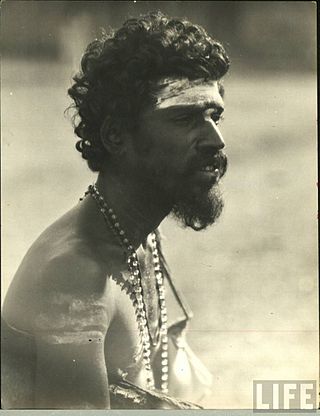
The Parabrahma Upanishad is one of the medieval era minor Upanishads of Hinduism composed in Sanskrit. The text is attached to the Atharvaveda, and is one of the 20 Sannyasa (renunciation) Upanishads.
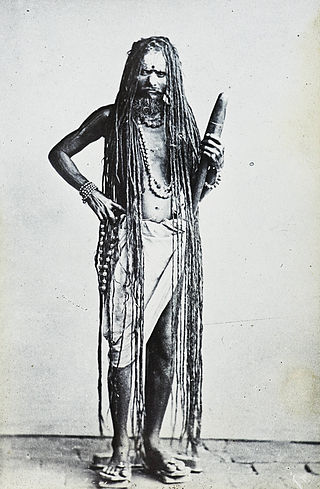
The Brihat-Sannyasa Upanishad is a 14th- or 15th-century Sanskrit text and one of the minor Upanishads of Hinduism. The text is attached to the Samaveda, and is one of the 20 Sannyasa (renunciation) Upanishads.

The Shatyayaniya Upanishad is a Sanskrit text, composed about the start of 13th-century, and is one of the minor Upanishads of Hinduism. The text is attached to the Shukla Yajurveda, and is one of the 20 Sannyasa (renunciation) Upanishads.

The Turiyatitavadhuta Upanishad is a medieval era Sanskrit text and is one of the minor Upanishads of Hinduism. The text is attached to the Shukla Yajurveda, and is one of the 20 Sannyasa (renunciation) Upanishads.
Shakta Upanishads are a group of minor Upanishads of Hinduism related to the Shaktism theology of a Goddess (Devi) as the Supreme Being. There are 8 Shakta Upanishads in the Muktika anthology of 108 Upanishads. They, along with other minor Upanishads, are generally classified separate from the thirteen major Principal Upanishads considered to be from the ancient Vedic tradition.


















